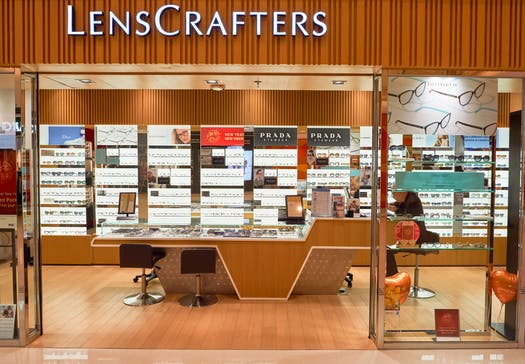Prescription eyewear represents perhaps the single biggest mass-market consumer ripoff to be found.
By David Lazarus
JANUARY 26, 2019 — 3:33PM
It is a question I get asked frequently, most recently by a colleague who was shocked to find that his new pair of prescription eyeglasses cost about $800. Why are these things so expensive?
The answer: Because no one is doing anything to prevent a near-monopolistic, $100-billion industry from shamelessly abusing its market power.
Prescription eyewear represents perhaps the single biggest mass-market consumer ripoff to be found.
The Vision Council, an optical industry trade group, estimates that about three-quarters of U.S. adults use some sort of vision correction. About two-thirds of that number wear eyeglasses. The average cost of a pair of frames is $231, according to VSP, the leading provider of employer eye-care benefits. A pair of single-vision lenses averages about $112. Progressive, no-line lenses can run twice that amount.
The true cost of a pair of acetate frames — three pieces of plastic and some bits of metal — is as low as $10, according to some estimates. Check out the prices of Chinese designer knockoffs available online.
The bottom line: You are paying a markup on glasses that would make a luxury car dealer blush.
“At the very least,” said Carmen Balber, executive director of the advocacy group Consumer Watchdog, “there needs to be some transparency about how much things really cost.”
Good luck with that.
I reached out to the Vision Council for an industry perspective on pricing, but a spokeswoman said the group was unavailable for comment on pricing.
What the Vision Council probably didn’t want to get into is the fact that for years a single company, Luxottica, has controlled much of the eyewear market. If you wear designer glasses, there’s a very good chance you are wearing Luxottica frames.
Its owned and licensed brands include Armani, Brooks Brothers, Burberry, Chanel, Coach, DKNY, Dolce & Gabbana, Michael Kors, Oakley, Oliver Peoples, Persol, Polo Ralph Lauren, Ray-Ban, Tiffany, Valentino, Vogue and Versace.
Italy’s Luxottica also runs EyeMed Vision Care, LensCrafters, Pearle Vision, Sears Optical, Sunglass Hut and Target Optical.
Just pause to appreciate the lengthy shadow this one company casts over the vision-care market. You go into a LensCrafters retail outlet, where the salesperson shows you Luxottica frames under various names, and then the company pays itself when you use your EyeMed insurance.
A very sweet deal.
And Luxottica is even bigger after merging last fall with France’s Essilor, the world’s leading maker of prescription eyeglass lenses and contact lenses. Do you have Transitions lenses in your frames? You are an Essilor customer.
The combined entity is called EssilorLuxottica. I reached out to the parent company as well as the Luxottica and Essilor subsidiaries asking about how frames and lenses are priced. None of them got back to me.
I wasn’t able to make any headway even with Warby Parker, the New York-based eyewear company whose whole raison d’être is to offer fashionable specs at a fraction of the price of other retailers.
Dr. Ranjeet Bajwa, president of the California Optometric Association, suggested that consumers actually are getting good value for their money.
“We often see lowball retailers promise price savings but fail to deliver the quality patients expect in terms of fit, comfort, durability and, of critical importance, precision in vision, over one or two years of daily wear,” he said.
“Eyeglass sales are becoming a very competitive market, with frames and lenses available in a range of prices and quality levels,” Bajwa said. “Today’s glasses aren’t the glasses of 20 years ago, and the price can reflect these technological advances.”
Fair enough. But with about 126 million American adults wearing prescription glasses, and many replacing those glasses every few years, you have to assume it doesn’t take long for frame and lens makers to recover any research-and-development costs.
The high cost of frames reflects a market that is woefully lacking in meaningful competition. Warby Parker recognized this as a business opportunity. I’m surprised others haven’t jumped in as well with reasonably priced eyewear.
Lenses are a whole other matter. This is the “health care” component of vision correction and as such should be affordable to all. However, as with prescription drugs, government officials are content to pretend that “the market” will protect patients.
It won’t. And the more than 1,000 percent markup for most vision products proves that.
Why do glasses cost so much?
Because this industry has been getting away with fleecing people for decades. And you don’t have to look hard to see this won’t change any time soon.



 RSS Feed
RSS Feed